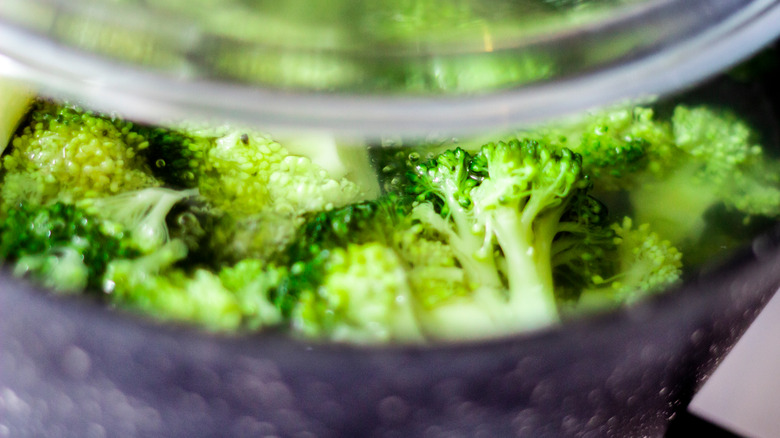When To Use The Quick Release On Your Instant Pot
Instant Pots have become a huge hit in the kitchen thanks to their ability to cook your food evenly and quickly using highly pressurized steam. While the Instant Pot does almost all the work for you — automatically adjusting the pressure — once it nearly finishes the pressure cooking process, you have to decide the best method to release pressure. Your Instant Pot has a valve that allows you to control what type of release is used to depressurize — natural release and quick release.
The natural release method lets the Instant Pot slowly cool down by gradually releasing the steam it has built up. The steam seeps out in a controlled way, sometimes called a manual or steam release. This option takes about 30 minutes. The quick release allows the pressure from your Instant Pot to escape rapidly, and only takes about two to five minutes. Your decision about which release to choose is based on the texture of the meal items you're preparing. A great tip for using the pressure cooker is to use quick release when cooking pasta, flashing vegetables, or steaming seafood. Rick Martinez suggests thinking ahead to your finished product. "Generally, foods that are cooked to a specific temperature, like meat, fish, and poultry, should be quickly released so they don't continue to cook," he told Food Network.
What's the best technique to use the quick release valve?
Operating the quick release valve on the Instant Pot process can be a little overwhelming the first time you try it, as it creates a steam surge with an accompanying sound burst. This depressurizing function can help protect the foods you're cooking so that their texture and crispness are at their peak. It can also help you from overcooking certain foods that don't take long to prepare.
The quick release on an Instant Pot is relatively safe if you practice proper precautions. To engage the quick release option, manually shift the mechanism from sealing to venting. You'll want silicone oven mitts and a thick kitchen towel close at hand. Rather than use your fingers, you might turn the valve with a secondary object like a wooden spoon or kitchen tongs. As you turn the valve, very hot steam will be immediately released. Don't be tempted to put your hands or face too close to the Instant Pot, just to be sure and cautious. You'll know it's finished and all the pressure has been released because the float valve will sink, and the lid will unlock. Your easy and delicious meal is now ready.
When to use the quick release on your Instant Pot
So many foods are ideal for quick release. Breakfast items like oatmeal or a French toast casserole retain their essence nicely with the quick release, as do tender, crisp vegetable side dishes. Quick release is best if you want to serve sturdy green broccoli, asparagus with a crunch, or juicy corn on the cob that pops with flavor. Lightly spiced cauliflower or bright snow peas also will hold their shape and texture well with the quick release.
It's also best to use the quick release function when cooking pasta and grains — items like mac and cheese or Asian steamed dumplings, risotto or polenta, savory rice pilaf, and quinoa. Additionally, delicate foods that have a tendency to overcook, like salmon and other fish as well as potatoes, are best to use with quick release.


